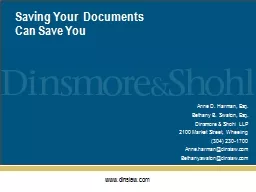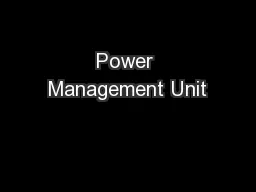PPT-Saving Your Documents
Author : tatyana-admore | Published Date : 2018-01-15
Can Save You Anne D Harman Esq Bethany B Swaton Esq Dinsmore amp Shohl LLP 2100 Market Street Wheeling 304 2301700 Anneharmandinslawcom Bethanyswatondinslawcom
Presentation Embed Code
Download Presentation
Download Presentation The PPT/PDF document "Saving Your Documents" is the property of its rightful owner. Permission is granted to download and print the materials on this website for personal, non-commercial use only, and to display it on your personal computer provided you do not modify the materials and that you retain all copyright notices contained in the materials. By downloading content from our website, you accept the terms of this agreement.
Saving Your Documents: Transcript
Download Rules Of Document
"Saving Your Documents"The content belongs to its owner. You may download and print it for personal use, without modification, and keep all copyright notices. By downloading, you agree to these terms.
Related Documents














